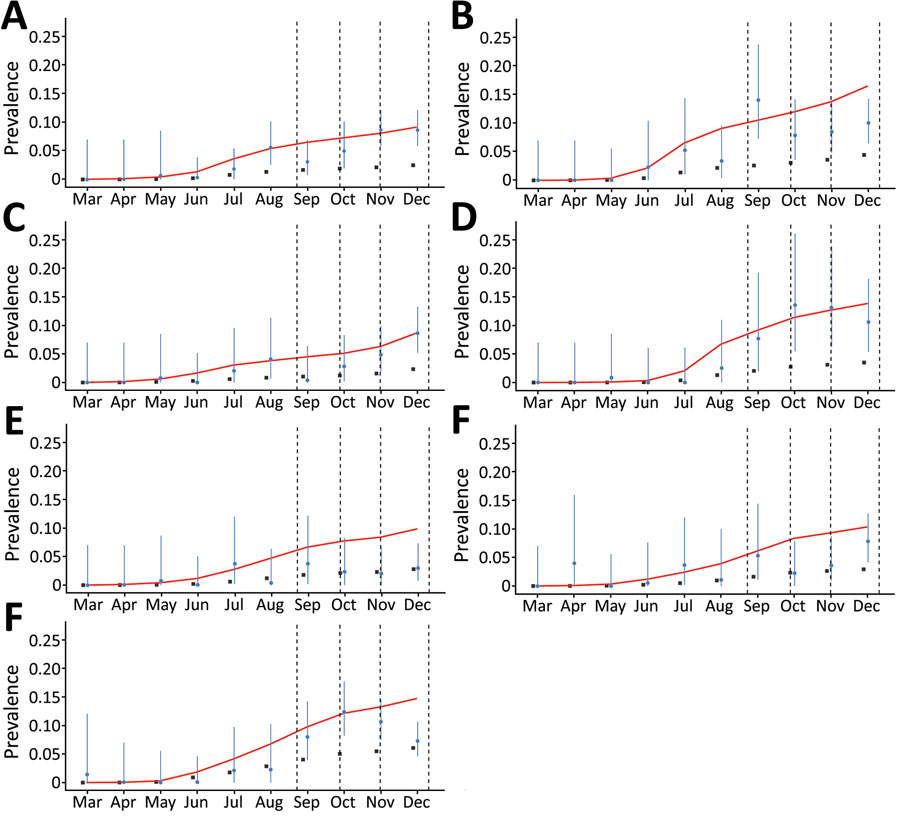Volume 28, Number 4—April 2022
Research
SARS-CoV-2 IgG Seroprevalence among Blood Donors as a Monitor of the COVID-19 Epidemic, Brazil
Figure 3

Figure 3. Proportion of severe acute respiratory syndrome coronavirus 2 (SARS-CoV-2) IgG–positive results among blood donors in blood donation centers in 7 cities in Minas Gerais, Brazil, March–December 2020. A) Belo Horizonte; B) Governador Valadares; C) Juiz de Fora; D) Montes Claros; E) Pouso Alegre; F) Uberaba; G) Uberlândia. Blue dots indicate proportion of SARS-CoV-2–positive donors at the end each month; vertical blue lines indicate 95% CIs. Black squares indicate the official cumulative prevalence of reported coronavirus disease cases for each city. Red lines represent model estimates of the number of infected persons, including reported and unreported cases, in each city, as a proportion of the city’s population. Vertical dashed lines indicate national holidays.
1These authors contributed equally to this article.